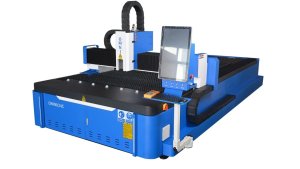CNC machining is all about precision and efficiency. One of the key aspects to get right is writing conflict-free program segments. A program segment tells the CNC machine exactly what to do, but if there are conflicting instructions, the machine can get confused. Let’s dive into some practical tips and examples to help you write clean, efficient, and conflict-free CNC program segments.
Understanding Conflict Words in Program Segments
The structure of a CNC program segment needs to be logical and coherent. For example, consider the following initial segment:
N1 G20 G21 G17This segment is illogical because it tells the controller to set both imperial and metric units at the same time while selecting the XY plane. Clearly, this is not possible. What happens in reality? If the controller encounters such conflicting instructions, some might throw an error, but Fanuc systems typically won’t. Instead, the control unit evaluates the sequence and activates the last instruction in the group. In the example above, G21 (metric) would be effective. However, it’s better to avoid such conflicts altogether.
If we look at another example using the address X:
N120 G01 X11.774 X10.994 Y7.056 F15.0Here, the same segment contains two X addresses. Unlike G codes, where multiple non-conflicting G codes are allowed, coordinate words like X cannot be repeated. The control system would issue a warning or an error because it doesn’t know which X value to use. Fanuc controllers, for instance, allow multiple G codes in the same segment as long as they don’t conflict, but they don’t allow more than one coordinate word per address in a single segment.
Proper Order and Logical Sequencing
Developing good programming habits includes writing segments in a logical order. The first word in a segment should be the program number, followed typically by one or more G codes, then the main axis movements (like X, Y, Z), auxiliary axes or vectors (I, J, K), auxiliary functions, and finally the feed rate. Here’s an example of a logically ordered segment:
N340 G01 X6.845 Y11.56 Z-0.75 F10.0In practice, the structure might vary slightly depending on the specific requirements of the operation. For example, the following segment is technically valid, but less conventional:
N340 Z-0.75 Y11.56 F10.0 X6.845 G01Handling Absolute and Incremental Modes
Consider a scenario where a segment mixes absolute and incremental mode instructions:
N150 G01 G90 X5.5 G91 Y7.7 F120This segment is a bit tricky because G90 sets absolute positioning, while G91 sets incremental positioning. Most Fanuc controllers will process this as written: the X axis moves to an absolute position, while the Y axis moves incrementally from the current tool position. This mixed-mode can be useful in certain situations, but it’s essential to understand how it will be interpreted to avoid unexpected results. Remember, subsequent segments will continue in incremental mode because G91 is the last mode set.
Arc Interpolation and Radius Definitions
When writing arc interpolation segments, you can use incremental center coordinates (I, J, K) or directly input the radius (R). Both methods are valid and achieve the same end result. Here are two examples for a 90° arc with a 1.5-inch radius:
Using I and J (incremental):
N21 G01 X15.35 Y11.348
N22 G02 X16.85 Y12.848 I1.5 J0
N23 G01 ...Using R (radius):
N21 G01 X15.35 Y11.348
N22 G02 X16.85 Y12.848 R1.5
N23 G01 ...If you try to use both I, J and R in the same segment:
N22 G02 X16.85 Y12.848 I1.5 J0 R1.5The control system will ignore I and J values and use the radius R value, because R takes priority.
Tips for Writing Conflict-Free Segments
- Consistency is Key: Always maintain a consistent format and sequence in your program segments.
- Avoid Repetition: Never repeat coordinate words or conflicting G codes in the same segment.
- Use Comments: Add comments to clarify complex instructions, making your program easier to understand and debug.
- Validate Segments: Test your segments on a simulator or non-critical parts before full-scale production.
- Keep It Simple: Simplify your segments by breaking down complex movements into multiple segments if necessary.
Table: Examples of Conflict and Conflict-Free Segments
| Segment Type | Example | Description |
|---|---|---|
| Conflict | N1 G20 G21 G17 | Conflicting G codes for units selection. |
| Conflict-Free | N1 G21 G17 | Correct segment with metric units and XY plane selection. |
| Conflict | N120 G01 X11.774 X10.994 Y7.056 F15.0 | Repeated X addresses in the same segment. |
| Conflict-Free | N120 G01 X11.774 Y7.056 F15.0 | Correct segment with a single X address. |
| Mixed Mode | N150 G01 G90 X5.5 G91 Y7.7 F120 | Mixed absolute and incremental modes. |
| Arc Definition | N22 G02 X16.85 Y12.848 I1.5 J0 R1.5 | Conflicting I, J, and R values. R takes priority. |
By following these tips and being mindful of potential conflicts, you can write clean and efficient CNC program segments. Happy machining!
Other Articles You Might Enjoy
- CNC Machining Parts: In-Depth Analysis of Milling and Turning Program Segments
CNC machining is like the magic wand of modern manufacturing, where intricate designs are brought to life with pinpoint accuracy. At the core of this marvel lies the program segment,…
- Precision CNC Machining of Steel: High-Volume Production
Precision CNC Machining and High-Volume Production As an integral part of modern manufacturing processes, Precision Computer Numerical Control (CNC) machining brings about unmatched accuracy and consistency in the production of…
- Material Versatility in CNC Machining: From Titanium to Thermoplastics
Introduction to CNC Machining CNC machining stands as a cornerstone in the manufacturing sector, enabling the precise creation of parts and components. This process utilizes computer numerical control (CNC) to…
- Precision CNC Machining for High-Performance Industrial Machinery
Precision CNC Machining for High-Performance Industrial Machinery The process of Precision CNC (Computer Numerical Control) machining is at the core of manufacturing high-performance industrial machinery. This technique leverages a computer's…
- Nickel vs. Cobalt Alloys in High-Temperature CNC Machining: A Detailed Analysis?
Nickel and Cobalt Alloys in High-Temperature CNC Machining Both Nickel and Cobalt alloys play an essential role in high-temperature CNC machining. These metal alloys are popular choices due to their…
- CNC Machining for Medical Applications: Compliance and Material Selection?
Introduction to CNC Machining in Medical Applications CNC or Computer Numerical Control machining is a manufacturing process wherein pre-programmed computer software dictates the movement of factory tools and machinery. This…









